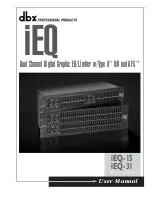
GB
FRONT SPEAKERS
The front speakers should be placed with the left
and right speakers evenly spaced either side of the
TV screen. The centre speaker should be placed
underneath or above the TV monitor so that dialogue
is localised close to the TV image.
SURROUND SPEAKERS
The surround speakers are used to create a diffuse
room-filling atmospheres rather than pin-point sound
effects. Surround speakers should be wall or shelf
mounted fairly high up either on the side walls, rear
wall or in the rear corners. Speakers can be mounted
facing sideways or upwards to increase the diffusing
effect by bouncing the sound off the walls and ceiling
before it reaches the listener.
SUB-WOOFER
The very low frequency sounds produced by the
sub-woofer are difficult to localise so the Sub-woofer
can be placed virtually anywhere in the room. Placing
Sub-woofers against walls or in corners will increase
the amount of bass produced in the room.
WHY HAVE A CENTER SPEAKER?
The Dolby Pro Logic decoder produces three sepa-
rate outputs for the Front signals - left, center and
right. On most soundtracks, the sound effects and
music are spread across all three front channels but
the dialogue is mainly fed to the center channel only.
Using a separate center channel speaker will allow
the dialogue to cut through even the biggest sound
effects and musical scores. Having the sound spread
across three front speakers also stabilises the stereo
image, making the usable listening area much bigger.
If you are using the AV 713 with only two front
speakers, setting the CENTER mode to PHANTOM
will place the center information on both the left and
right speakers. This creates the impression of a cen-
ter channel sound source.
For best results, you should consider using a cen-
ter speaker. Ideally it should be the same type as the
left and right speakers, although there are now many
new speakers, such as the NAD 808CC, which are
specifically designed as center channel add-ons for
existing stereo systems.
CAUTION: Ensure that any speaker that is to be
used near a TV or monitor is of the magnetically
shielded type (see loudspeaker’s instruction manual).
Unshielded speakers used too close to a TV or moni-
tor may cause colour distortions of the TV picture. (It
is not normally possible to modify an unshielded
speaker to work very close to a TV or monitor).
WHY HAVE A SUB-WOOFER?
Many film soundtracks rely heavily on very low fre-
quency sound effects which are difficult for normal hi-
fi speakers to reproduce. To faithfully reproduce
these low frequencies you can use a specially
designed low frequency loudspeaker with its own
built-in amplifier. Because it is difficult to hear which
direction very low frequencies are coming from, you
only normally need one sub-woofer and this can be
placed virtually anywhere in the room. The MONO
output of the AV 713 is designed specifically to drive
a sub-woofer system.
SPEAKER PHASE
In a home theatre system it is important that the
three front speakers are all in phase compared to
each other. Incorrect phase will produce a poor
stereo image and an apparent lack of bass. If you are
using speakers all from one manufacturer and power
amplifiers all from one manufacturer then to ensure
correct phasing of the system, just make sure that all
the red + connectors on the power amplifier speaker
outputs are connected to the red + connector on the
loudspeaker.
If you are using a mix of amplifiers or speakers
from different manufacturers, or using amplifiers in
‘bridge’ mode, then it is possible that the phase can
be internally reversed in the some of the amplifiers or
speakers, so you must check for correct phase by lis-
tening.
To check phase by listening, set the AV 713 to
DOLBY PRO LOGIC and MUTE OFF and select a
FM radio station. This will give you the same sound
on all three front speakers. Disconnect the surround
speakers and the right front speaker. A stable sound
image should be heard as though it comes from a
single point between the centre and left front speak-
ers. If the signal sounds diffuse and not as though it
is coming from a single point in space, reverse the
connections to the center loudspeaker. The signal
should now appear to come from a single point
between the left and centre speakers.
Reconnect the right front speaker and disconnect
the left front speaker and repeat the procedure for the
right and center front speakers, changing the connec-
tion only on the right front speaker if the phase needs
correction.
Surrounds will normally be in phase with each other
if they have been correctly connected.
There is no absolute rule regarding the relative
phase between the front speakers and the surround
speaker pair or the Sub-Woofer (if used). Connecting
these using the red + connector from the amplifier to
the red + connector on the speakers should produce
correct results. But in some rooms reversing the con-
nections may produce a noticeable increase in bass
response or an improvement in overall stereo
imagery, so you may wish to experiment with revers-
ing the connections on both the surrounds or revers-
ing the connections to the sub-woofer.
SYSTEM EXAMPLES
The AV 713 can be used at the heart of a broad
range of surround sound systems. Here are two pos-
sible systems configurations; one basic and one
advanced.
A SIMPLE SET-UP USING THE AV 713.
This system uses the AV 713 with a video,
turntable, CD, cassette deck and TV stereo front
speakers and surrounds such as the NAD 805RC.
NAD
13
Содержание 713
Страница 3: ...NAD 3 REAR PANEL CONNECTIONS FRONT PANEL CONTROLS ...
Страница 5: ......


































